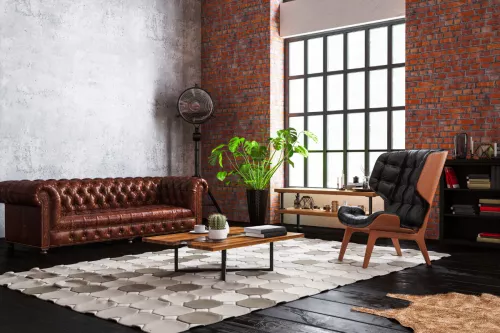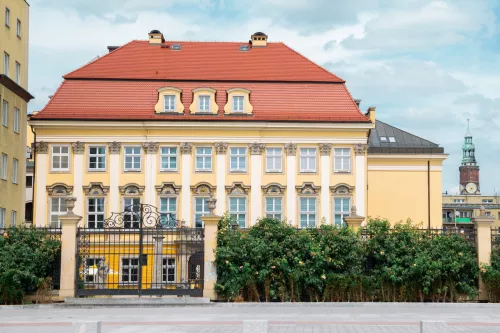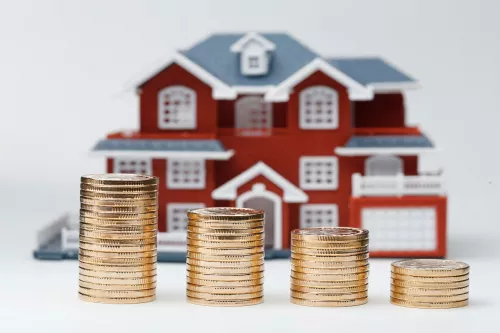Are you about to move, and wondering how to organize your new place? Are you trying to revamp your home’s look and style? If so, you will find our post on interior design very useful and interesting.
Learning about interior designs can provide us with a language that reflects our personality throughout our home. Numerous interior design styles exist, and the variety is constantly expanding. While some of these styles are temporary trends, others are enduring classics that remain stylish over the years.
Each style is defined by its unique combination of furniture, decor, lighting, and accessories, creating its own distinct appearance. By familiarizing yourself with some of the most prominent styles, you'll gain a clearer idea of which ones resonate with your personal tastes and requirements.
You will see that interior design is a dynamic and creative field that reflects personal tastes, cultural influences, and contemporary trends. Without further ado, let’s get started!
What is the Most Popular Interior Design Style?
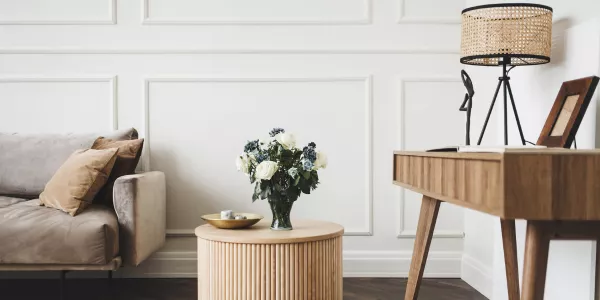
Considering the trends up to 2024, the most popular interior design style is Scandinavian. This style has steadily gained prominence due to its focus on simplicity, functionality, and a connection to nature. Characterized by minimalist yet cozy elements, the Scandinavian design favors clean lines, muted colors, and an emphasis on eco-friendly and sustainable materials.
The popularity of this style can be attributed to its versatile and uncluttered aesthetic, making it suitable for various living spaces, from compact apartments to spacious homes. It appeals to a wide audience because it combines practicality with a serene and inviting atmosphere.
Moreover, in an age where environmental consciousness is increasingly important, Scandinavian design's emphasis on sustainable and natural materials resonates strongly with contemporary sensibilities.
How Do I Choose a Design Style for My House?
Choosing the right interior design style for your house sounds like a lot of fun, and it is. But it also involves serious thought and consideration. We will point out some of the most important points:
Your actual space
Consider your space and what will resonate with it. The impression you pass when combining the space and the design style that seems to be created to that specific place is something that stands up.
Personal Preferences
Of course, consider your own taste. What do you want to reflect in your home? Think about what colors, textures, and shapes you are naturally drawn to, from there start looking for ideas that fit your preferences. Inspiration for home design and style is everywhere.
Begin by browsing your favorite magazines or exploring online via blogs and social media platforms. If you're still searching for that creative spark, step outside and explore!
From historic buildings and art galleries to gardens, museums, and even certain hotels, there are numerous places that offer design elements which could be wonderfully incorporated into your home.
Lifestyle Needs
Consider the functionality of your space. Families might need durable, easy-to-clean surfaces, while a bachelor pad could have more experimental, avant-garde elements. Your home should reflect your personal style and be a place where you feel completely at ease.
Whether you prefer a cozy, clutter-free, or vibrant and eclectic environment, your design choice should align with what makes you feel most comfortable and happy.
Budget
Start by determining how much you can comfortably spend. This helps in making informed decisions about what changes are feasible and prioritizing elements that are most important to you. Some styles, like luxury or bohemian, can be adapted to fit various budgets.
What Interior Style is Timeless?
Classic and traditional styles are considered timeless. These styles often feature elegant furnishings, rich color palettes, and symmetrical arrangements. They are adaptable and can easily be updated with contemporary elements to keep them fresh and relevant. Let’s see a little more about them:
Classic design style

Classic interior designs typically feature a muted and consistent color palette. This style primarily utilizes creamy whites, beiges, and warm browns, creating a calm and dignified atmosphere. The walls are often painted in neutral tones, although they may also be adorned with wallpapers featuring understated designs like subtle florals, stripes, or jacquard patterns.
The fabrics for curtains, as well as the upholstery and cushions of sofas and armchairs, are chosen to complement this overall aesthetic. Brighter colors, such as greens and blues, are used only as minimal accents. Gold and silver elements appear in accessories but are used with restraint to avoid a kitschy look. Overall, the finishes are understated and traditional, avoiding bold contrasts.
Traditional design
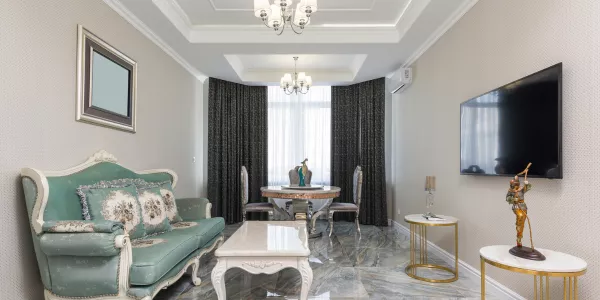
Traditional interior design style draws inspiration from a variety of time periods and regions, but it often harkens back to European decor from the 18th and 19th centuries. It’s a timeless style that exemplifies elegance and comfort.
It features deep, rich tones, sometimes accented with jewel-like colors such as sapphire, ruby, and emerald. However, the base for these colors often starts with a neutral background, like creams and beiges, providing a warm, inviting setting that allows the richer colors to stand out. Its furniture is often inspired by classic European decor.
These pieces are substantial and built to last, with a lot of attention paid to the details of the woodwork. You'll find plush sofas and wingback chairs, ornately carved wood pieces, and furniture that encourages comfort and conversation.
Examples of Interior Design Styles
Now we will go through some of the design styles that most captivate people’s attention. You might find your next home design among our options!
Minimalist
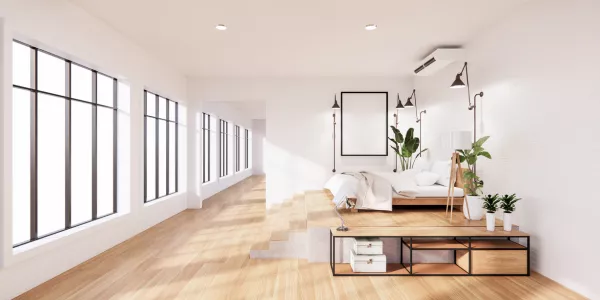
Minimalist interior design is an exercise in restraint, where space, lighting, and objects play equally significant roles. This design philosophy champions simplicity, clean lines, and a monochromatic palette, emphasizing the 'less is more' approach.
Neutral colors dominate, providing a calm and serene environment, while textures add subtle complexity. High-quality materials and streamlined furniture are central, chosen for both their functionality and ability to enhance the open space.
Decor is kept to a minimum, with a few carefully selected pieces that evoke a sense of tranquility and order. Natural light is maximized to illuminate the space and highlight the minimalist aesthetic.
Bohemian
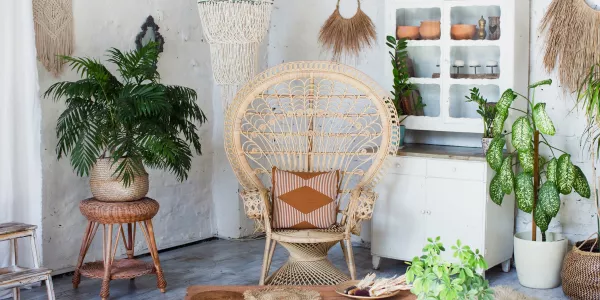
Bohemian interior design is a vibrant and eclectic style that defies conventional rules, embracing a carefree and adventurous spirit. It's characterized by a rich tapestry of patterns, colors, and textures, drawn from a variety of global influences and periods.
This style often features layers of colorful textiles, such as throws, rugs, and pillows, mixed with an array of unique furniture that can range from vintage finds to contemporary pieces. The Bohemian aesthetic is personal and sentimental, often showcasing a collection of objects that tell the story of the individual’s travels and experiences. Plants are another staple in Bohemian decor, adding life and a touch of nature.
Industrial
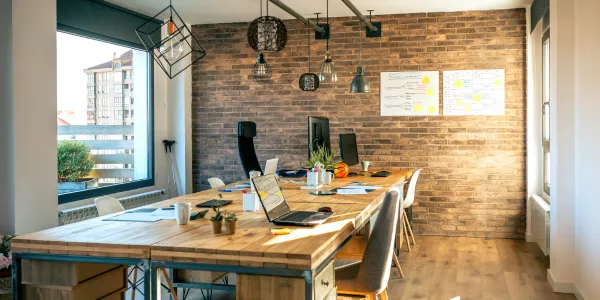
Industrial interior design is a raw and edgy style that draws inspiration from the unrefined look of warehouses, factories, and other industrial structures. It's distinguished by its use of exposed steel, distressed wooden elements, and exposed brick walls, often complemented by a neutral, earth-toned color scheme that echoes the manufacturing environments from which it takes its cues.
High ceilings, hanging metal light fixtures, and sparse functional furniture are typical features, while open floor plans underscore the spacious, utilitarian feel of the style. Decor is minimal, with an emphasis on mixing raw materials and rough textures to add depth.
Contemporary
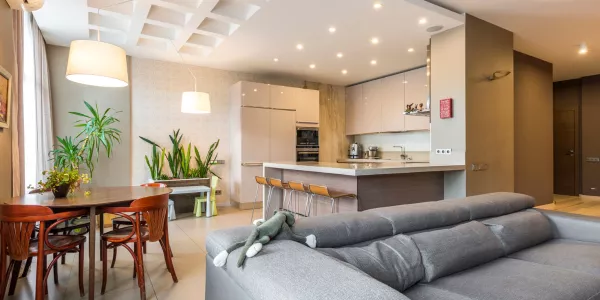
Contemporary interior design is defined by its emphasis on simplicity, subtle sophistication, and a clean and crisp lines framework. It's a dynamic and fluid style that often incorporates current trends while maintaining a minimalist approach.
Characterized by a neutral color palette accented with bold color contrasts and geometric patterns, contemporary design features sleek and smooth materials like metal, glass, and steel. Furniture with exposed legs and clean, straight lines is common, enhancing the sense of space and openness.
Artwork and accessories are used as focal points to add splashes of color, while open floor plans and large windows invite ample natural light, creating airy and light-filled spaces.
Modern
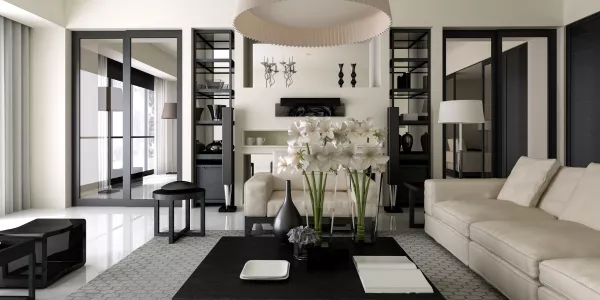
Modern interior design is epitomized by its devotion to the simplicity of form and function, celebrating a clutter-free aesthetic rooted in the principles of mid-20th century design movements. The style features clean, crisp lines and a simple color palette, employing materials such as steel, glass, and reinforced concrete to create a sense of airiness and space.
Furnishings are characterized by their streamlined forms and lack of ornamental detailing, favoring function over decoration. Modern design also places a strong emphasis on the incorporation of natural light, which is often amplified by unadorned windows and reflective surfaces.
People also ask
Can I mix different interior design styles?
Absolutely, mixing different interior design styles is not only possible but can also lead to beautifully unique and personalized spaces. This approach, often referred to as "eclectic" design, involves blending elements from various styles to create a cohesive look.
Is it possible to update my home to a new style on a budget?
Yes, updating your home style on a budget is achievable. A new coat of paint can dramatically transform a space. Choose a color that aligns with your desired style and gives the room a fresh, new feel. Take on DIY projects to add personal touches to your home. This could include refinishing furniture, creating your own artwork, or sewing your own curtains and cushions.
How often do interior design trends change?
Interior design trends, much like trends in fashion and other creative fields, can shift quite frequently, though the rate of change varies. Generally, major interior design trends tend to evolve over a period of years rather than on a seasonal or annual basis.
This slower pace allows for more sustainable and practical changes in home decor, as completely renovating interiors every year is neither feasible nor desirable for most people.
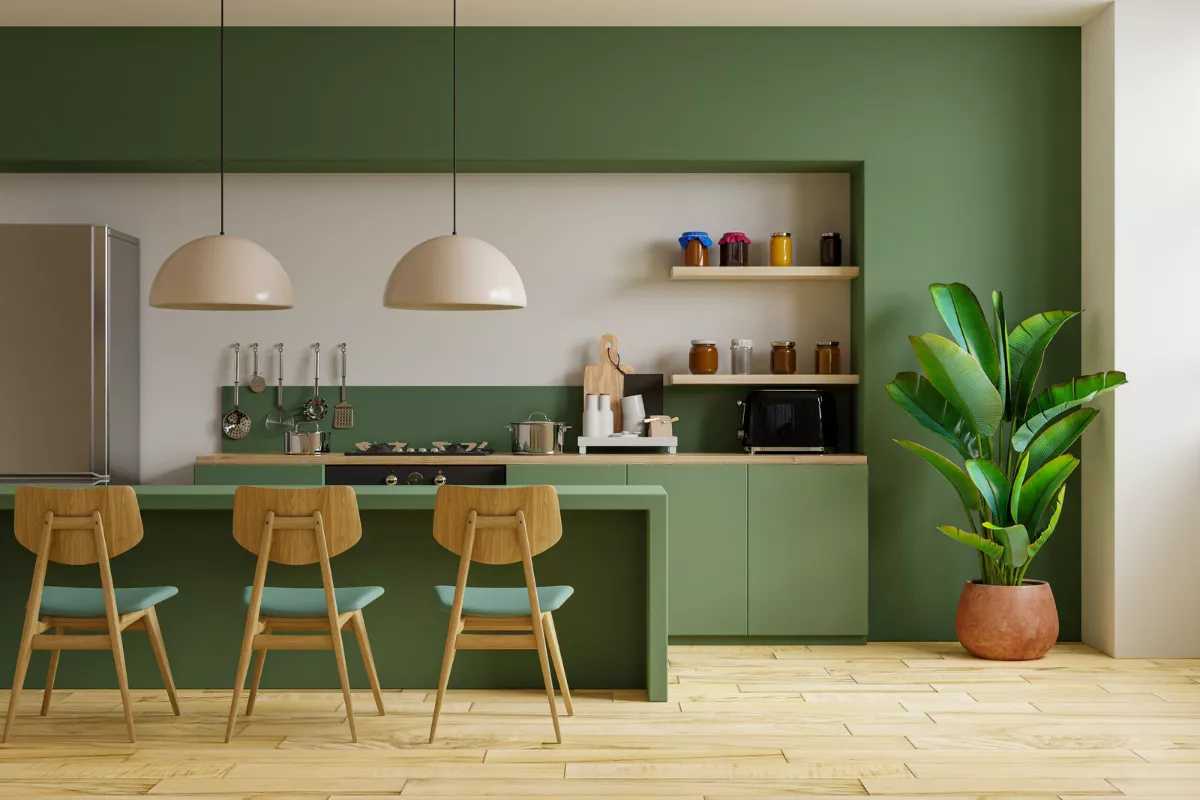
 Marcio Vasconcelos
Marcio Vasconcelos
